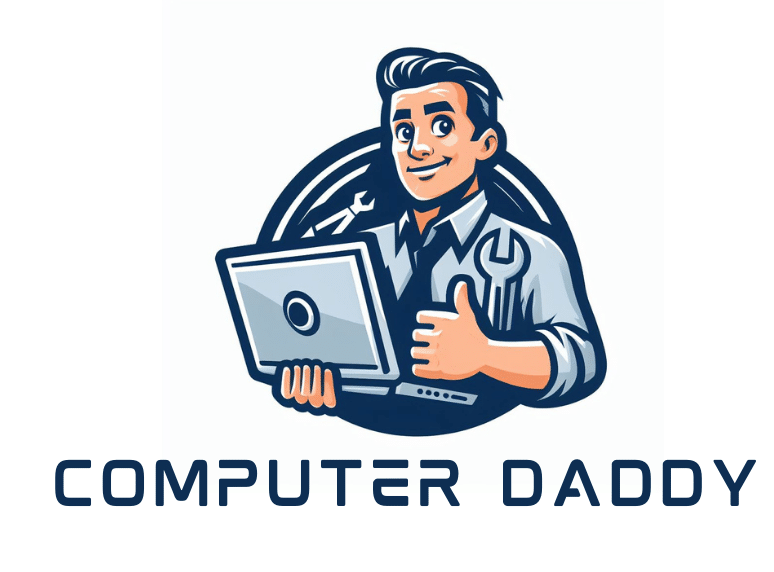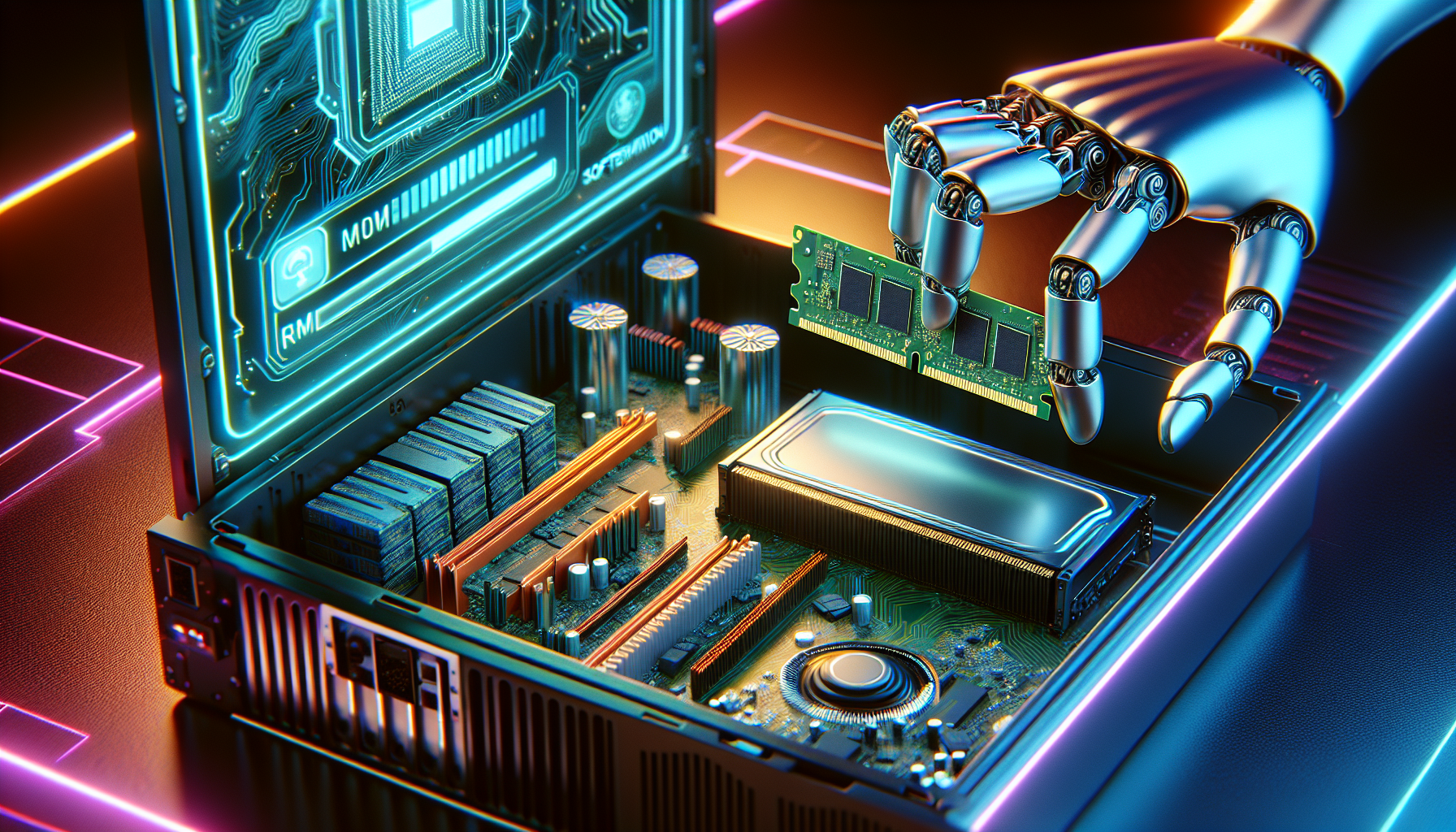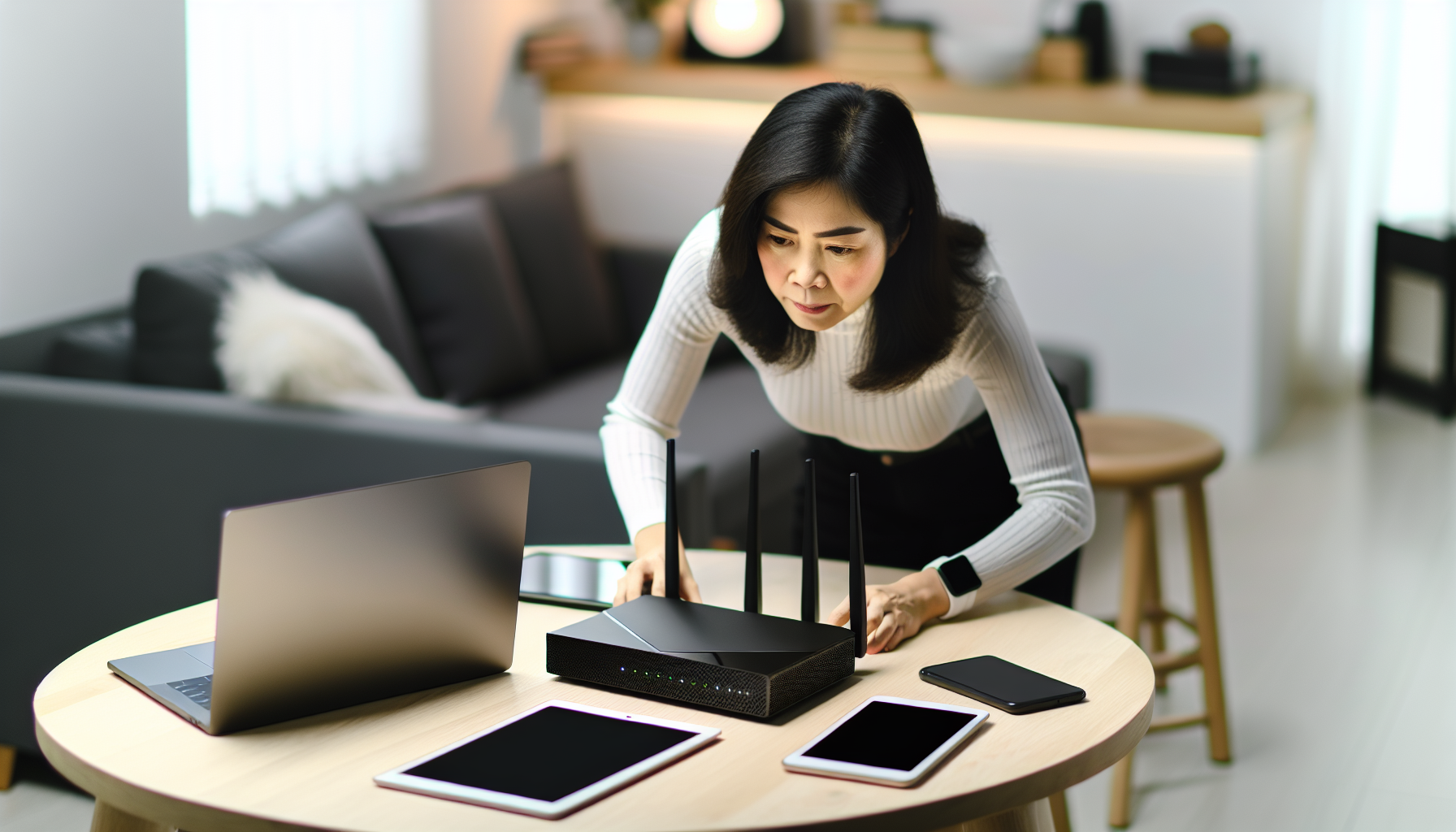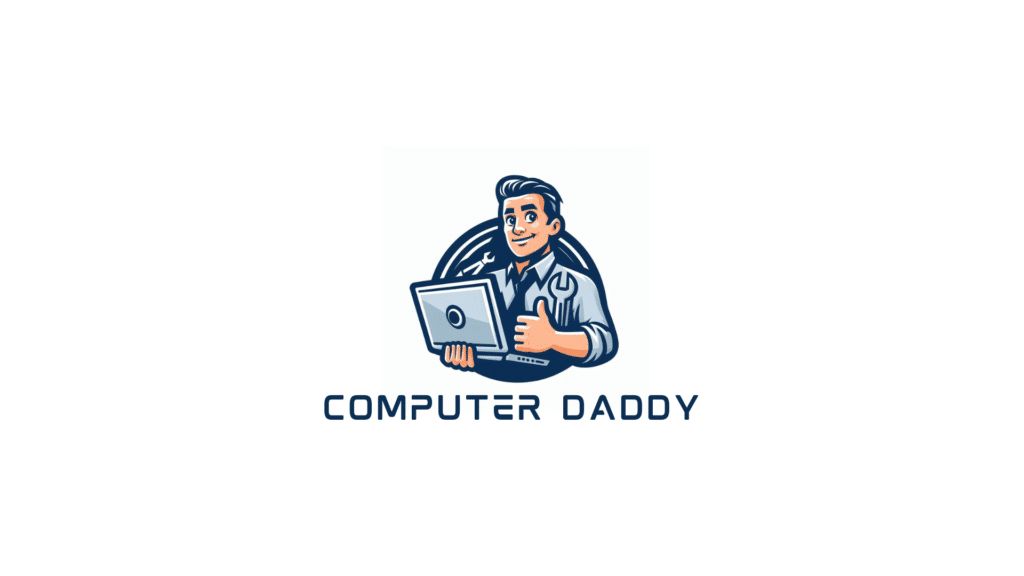Facing computer troubles at home can be daunting, but you don’t always need to call in the pros. Our guide to computer troubleshooting repairs for home users is here to empower you with step-by-step instructions for tackling the most common technical issues. Learn how to remedy slowdowns, connection interruptions, and other typical tech problems, quickly and efficiently, all by yourself.
Computer repairs – Key Takeaways
- Identifying common computer problems, like slow performance and internet issues, is crucial for effective home troubleshooting and includes understanding both hardware failures (like overheating and failed hard drives) and software issues (such as outdated software and malware).
- DIY troubleshooting techniques like rebooting the system, checking cables, updating software, and using basic network commands can resolve many issues, but it’s important to know when to seek professional help for more complex problems.
- Regular data backups and virus protection measures are essential for safeguarding your system, while hardware and software upgrades, along with adopting wireless networking, can increase efficiency and extend your computer’s lifespan.
Understanding Common Computer Issues
Many home users find common computer issues concerning. Slow performance, for instance, can be indicated by frequent need for restarts, excessive active programs or browser tabs, rogue programs consuming processing power, maxed-out hard-drive or memory, and occurrences of crashing, freezing, or turning off. Computer freezing or crashing can be attributed to factors like having an excessive number of programs open, driver corruption or errors, overheating, insufficient RAM, hardware misconfiguration, faulty software, or faulty hardware.
Internet connectivity issues are also common in home and business computers too. These can range from:
- slow network speeds
- weak Wi-Fi signals
- IP address problems
- the dreaded ‘Wifi connected but no internet’ issue
Grasping the root cause these prevalent problems marks the beginning of efficient computer troubleshooting.
Top Causes of Computer Problems
Computer malfunctions can be caused by a number of hardware issues. These include:
- Failed hard drives
- Slow internet connection
- Overheating
- Dysfunctional USB ports
- Issues with PC fans
A basic comprehension of these issues aids in identifying and resolving computer problems early on.
Software, too, can be responsible for issues. Outdated software can lead to:
- Security vulnerabilities
- Compatibility issues
- Reduced system performance
- System crashes
- Reliability problems
- Data loss
- Decreased performance due to compatibility issues with other software and hardware.
Malware is another common cause of computer problems. It inflicts damage, disrupts operations, or gains unauthorized access to computer systems. Awareness of these causes can aid in the prevention or reduction of numerous common computer issues.
DIY Troubleshooting Techniques
Although the realm of DIY home computer repairs might appear intimidating, numerous common problems can be solved using simple techniques. Here are some typical do-it-yourself troubleshooting methods for addressing hardware and software issues:
- Restarting the computer
- Researching error messages online
- Inspecting cables
- Updating software
- Closing unused programs
These methods can often solve the problem without the need for professional assistance.
Restarting a computer, for instance, can resolve peripheral and hardware issues, allowing the system to reset and start afresh, which often clears up glitches and computer problem related to software.
For internet connectivity issues, you can follow these steps:
- Check the hardware
- Use ipconfig
- Use ping and tracert
- Perform a DNS check
- Contact your ISP
These straightforward methods can assist in rectifying issues and preserving your computer’s performance.
When to Call a Professional Computer Technician
Despite these DIY techniques, there are times when it’s best to call a professional computer technician. You should consider calling us at Computer Daddy if:
- Your computer isn’t powering on
- You’re experiencing overall system slowdown
- Your peripherals are malfunctioning
- You’re having audio problems
- You’re experiencing recurring blue screens
- You’re seeing graphical errors
- Your monitor is blank
- Your games are stuttering
- Your PC shuts down unexpectidly
- You need to backup your photos and important data
- You’ve been hacked…
In these cases, a professional technician may be needed.
Certain hardware issues, such as faulty laptop battery replacement or motherboard failure, are intricate and pose the risk of causing additional damage if mishandled. Attempting to resolve computer issues without professional expertise can worsen the problem and lead to further harm to the computer.
Knowing when to call a professional is as important as knowing how to conduct basic troubleshooting.
Data Backup and Recovery Solutions
Data backup and recovery solutions are pivotal in protecting your crucial files and facilitating data recovery. At the very least, we recommend a full backup weekly for home users. This simple step can be automated so you don’t have to do a thing. It gives you peace of mind that your important photos and documents are avaialbe if someting goes wrong. People often forget that a house fire or burglary can take your important files away. Simply having a copy on an external hard drive or NAS is NOT a backup and is silly… the backup needs to be stored offsite, out of the house like in the Cloud where it’s safe from all physical risks. The good news is in 2024 there are many free cloud backup services, so ask ask about setting this up for you.
Data recovery, on the other hand, involves evaluating the data loss, assessing physical and logical damage, preparing the data, and concluding the recovery process. Companies that offer data recovery services use software with algorithms to analyze metadata and conduct system scans to identify and recover corrupted or lost data.
Virus Removal and Protection Tips
Computer viruses can cause significant disruptions in your system, including:
- Unexpected pop-ups
- Random sounds
- Changes in files or folders without explanation
- Sluggish operation
- Diminished computer performance
- Access denial
- Frequent system freezes or crashes
Upon detecting a virus, safe removal can be achieved through the following steps:
- Download and install a good virus scanner.
- Disconnect from the internet.
- Reboot your computer in safe mode.
- Erase temporary files.
- Adhere to instructions provided by your virus scanner for virus removal or file quarantine.
To prevent virus infections, it is recommended to update antivirus software daily or at least once a week, particularly if you use your computer frequently and engage in internet browsing.
Upgrading Hardware and Software
Upgrading hardware and software is one strategy to boost your computer’s performance and prolong its lifespan. Common hardware upgrades include:
- Upgrading the processor and getting more life out of your aging computer. The AMD AM4 socket was released in 2016, yet with a simple BIOS update it can run the latest 2024 Ryzen CPU’s and give your old computer a huge boost in power. We specifically like the Ryzen 5600 CPU.
- Increasing RAM to the maximum your motherboard supports. We reccommend 16GB RAM as the absolute minimum in 2024, but 32GB is the recommendation for a machine that lets you open multipe Chrome browser tabs, multiple applications, gaming and productivity. The good news is RAM is very cheap nowadays.
- Upgrading to a faster SSD or hard drive HDD. Storage isn’t about space anymore, it’s about speed! Older computers came with a mechanical, clunky hard disk drives (HDD) which are very slow by todays standards. We recommend upgrading from an old HDD to an SSD (Solid State Drive) or better yet an ultra fast NVME drive if your motherboard can support it. The overall feel of your computer will be super fast and snappy. They come in sizes like 1TB so storage isn’t an issue, but you will love the improved performance.
- Upgrading the graphics card is a must for playing games in 2024. There are plety to choose from and it can be confusing to compare the differences. AMD, Nvidia, GTX this and RTX that? Cow many cuda cores? HOw much VRAM? Leave it all to us. We can even sourve you a used GPU with a 3 month warranty to keep the costs super low. Let’s get the kids computer upgraded before school holidays and hopefully they will leave you in peace. When the kids ask to play these games, we can get you battle ready. Fortnite, Minecraft, League of Legends, Counter-Strike, Dota 2, Call of Duty, Apex Legends, Arena of Valor, PUBG: Battlegrounds, many more.
Improving a computer can be a fiddly job and you really need to understand the compatibility constraints between older parts and new software, especially if you want them to play nciely together. Do you know the specific BIOS revision required to upgrade your CPU? We do. We love this geek stuff and can get you up and running in no time and keep all of the geek speak to ourselves.
These upgrades, when done correctly, can significantly improve your computer’s performance, making it more efficient and responsive.
Wireless Networking for Home Users
Home users can enjoy a multitude of benefits through wireless networking. These include:
- Heightened efficiency with fast transfers
- Flexibility to walk aorund the house
- Cost-effectiveness
- Streamlined file sharing from your TV laptop
- Internet connectivity sharing
- Enhanced collaboration via Teams, Zoom, etc
- Improved access for individuals with disabilities or medical conditions
Wireless networking enhances home connectivity by providing the flexibility to expand home network and coverage using devices like Wi-Fi extenders, ensuring convenience and a broader network reach throughout the home.
Through integrating a wireless network in a home setup, you can achieve:
- Seamless sharing of files, internet connections, computer peripherals, and other devices
- Enhanced efficiency, accessibility, and flexibility
- Cost-effectiveness
- New opportunities
Ask to give us a call about upgrading your WiFI too as your laptop, desktop or even TV can be upgraded. We can open up your laptop and remove an out of date WiFi module and install a lightning fast WiFi and Bluetooth module for a massive boost in speed. WiFi is often the cause of a slow game or stuttering Netflix tv show. We can reconfigure your home WiFi to get the most out of it.
TIP: A simple tip is to scan your neighbiours WiFi network and make sure that your WiFi network isn’t talking on the same frequency. You can adjust your frequency on your router and this simple step often boosts speed and response by a huge amount.
Remote Support Services: A Convenient Option
Remote support services provide home users with the convenience of obtaining professional help without the necessity of a physical visit. They operate by utilizing remote access software, enabling technicians to give remote services to:
- Observe and manage a remote device
- Run diagnostics
- Transfer files
- Execute troubleshooting steps
All of this can be done remotely if an in home visit isn’t practical for a quick fix etc
Security: Don’t worry, we maintain full security, passwords and of course your permission to connect remotely.
Remote computer support is frequently more efficient and convenient than computer repair services, particularly in handling software-related issues, routine maintenance tasks, and certain network problems. Quality computer repairs can also be provided by computer technicians, including a computer repair technician, who can offer assistance remotely, making it even more convenient for the user.
Opting for remote support services can result in time and cost savings, all while delivering excellent service right from your own home or business too.
Training and Resources for Home Users
Various training resources can simplify the process of staying updated on the latest computer software and hardware. Novice individuals can access online training resources at educational platforms such as: Udemy.com.
These platforms provide a diverse array of courses designed specifically for beginners in the field of computers.
Users can remain informed about the latest computer software by utilizing training resources from reputable platforms such as Percipio, Coursera, Udemy, and official resources provide training and from software providers such as Microsoft for their Office applications.
With these resources readily available, your learning journey and computer skill improvement can continue, equipping you with new computer, to keep pace with the latest technology trends and tackle most tech issues that you encounter.
Summary
In conclusion, understanding basic computer troubleshooting, knowing when to call a professional, and taking preventative measures such as data backup and virus protection can empower you to maintain your computer’s performance and longevity. With the right knowledge, tools, and resources, you can become your own computer expert and ensure your devices wireless networks are always running smoothly.
Frequently Asked Questions
How do you troubleshoot basic issues with a personal computer?
To troubleshoot basic issues with your personal computer, start by checking all cables to ensure they are properly connected. If the problem persists, try restarting the computer. Rebooting can often resolve common issues without much effort. Beyond this, it gets complicated quickly so call us for advice.
What do Computer Daddy charge per hour?
We charge less than the other guys. We have great service, don’t charge for travel time and have a price beat guarantee.
What is PC maintenance and troubleshooting?
PC maintenance involves regular care to prevent issues like data loss, while troubleshooting focuses on identifying and fixing problems. Both are crucial for keeping your computer in good working condition.
What are some common computer issues?
Common computer issues like slow performance, freezing, connectivity problems, and hardware failures can often be experienced. If you encounter any of these issues, consider seeking professional help for a swift resolution.
When should I call a professional computer technician?
You should call a us at Computer Daddy and speak to a computer technician when you face complex hardware issues or persistent software problems that you can’t solve on your own. It’s best to seek their expertise in these situations. Contact us.







